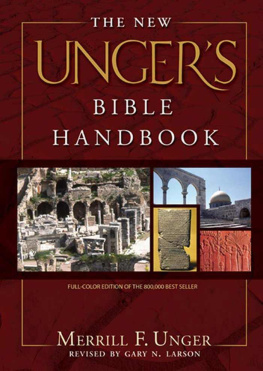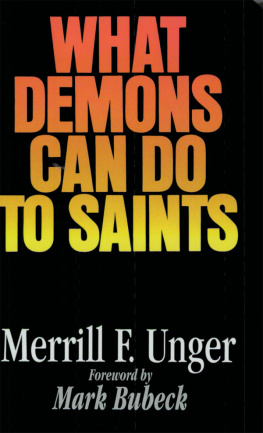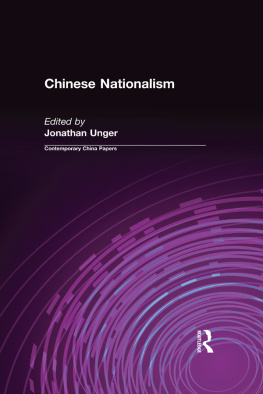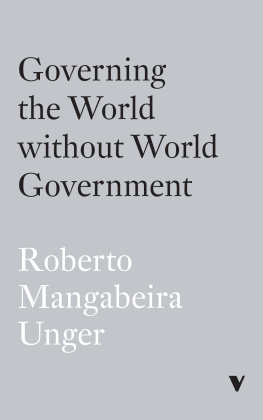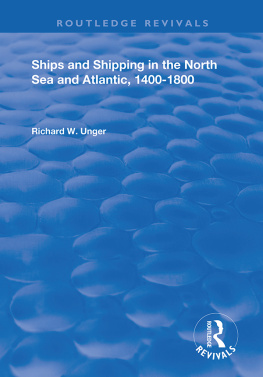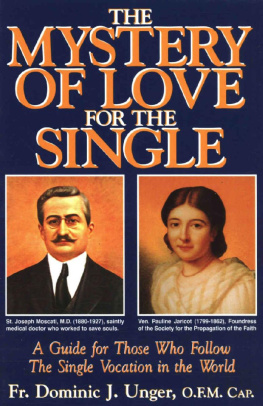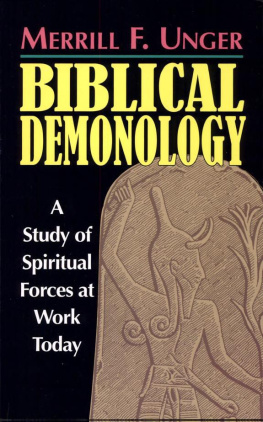Merrill F. Unger - The New Unger’s Bible Handbook
Here you can read online Merrill F. Unger - The New Unger’s Bible Handbook full text of the book (entire story) in english for free. Download pdf and epub, get meaning, cover and reviews about this ebook. year: 2005, publisher: Moody Press, genre: Religion. Description of the work, (preface) as well as reviews are available. Best literature library LitArk.com created for fans of good reading and offers a wide selection of genres:
Romance novel
Science fiction
Adventure
Detective
Science
History
Home and family
Prose
Art
Politics
Computer
Non-fiction
Religion
Business
Children
Humor
Choose a favorite category and find really read worthwhile books. Enjoy immersion in the world of imagination, feel the emotions of the characters or learn something new for yourself, make an fascinating discovery.
- Book:The New Unger’s Bible Handbook
- Author:
- Publisher:Moody Press
- Genre:
- Year:2005
- Rating:3 / 5
- Favourites:Add to favourites
- Your mark:
- 60
- 1
- 2
- 3
- 4
- 5
The New Unger’s Bible Handbook: summary, description and annotation
We offer to read an annotation, description, summary or preface (depends on what the author of the book "The New Unger’s Bible Handbook" wrote himself). If you haven't found the necessary information about the book — write in the comments, we will try to find it.
The New Unger’s Bible Handbook — read online for free the complete book (whole text) full work
Below is the text of the book, divided by pages. System saving the place of the last page read, allows you to conveniently read the book "The New Unger’s Bible Handbook" online for free, without having to search again every time where you left off. Put a bookmark, and you can go to the page where you finished reading at any time.
Font size:
Interval:
Bookmark:
BIBLE
HANDBOOK


Revised and Updated edition: 1966, 1984, 1998, 2005 The Moody Bible Institute of Chicago.
All rights reserved. No part of this book may be reproduced in any form without permission in writing from the publisher, except in the case of brief quotations embodied in critical articles or reviews.
Except where noted otherwise, all Scripture quotations in this book are from the Holy Bible: New International Version, 1973, 1978 by the International Bible Society. Used by permission of Zondervan Bible Publishers.
Library of Congress Cataloging in Publication Data
Unger, Merrill Frederick,
The new Ungers Bible handbook.
Rev. ed. of: Ungers Bible handbook. [1st ed.]. 1966
Includes index
1. BiblesHandbooks, manuals, etc. I. Larson, Gary N. II. Unger, Merrill Frederick, Bible handbook. III. Title.
BS417.U5 1984 220.7 84-1032
ISBN 0-8024
Designed and produced for Moody Press by Threes Company and Lion Hudson plc
Cover design: PaetzoldAssociates
Photo: Getty Images
Worldwide co-edition produced by Lion Hudson plc,
Mayfield House,
256 Banbury Road,
Oxford OX2 7DH, England.
Telephone: +44 (0) 1865 302750.
Fax: +44 (0) 1865 302757.
Email:
Printed in Singapore
1 2 3 4 5 6 / 08 07 06 05
Since 1894, Moody Publishers has been dedicated to equip and motivate people to advance the cause of Christ by publishing evangelical Christian literature and other media for all ages around the world. Because we are a ministry of the Moody Bible Institute of Chicago, a portion of the proceeds from the sale of this book go to train the next generation of Christian leaders.
If we may serve you in any way in your spiritual journey toward understanding Christ and the Christian life, please contact us at www.moodypublishers.com .
Picture Acknowledgments
Photographs
Bible Scene: p. 561
Karen Demuth: pp. 70, 72
Tim Dowley: pp. 12, 13, 26, 30, 31, 32, 33, 57 bottom, 60, 81, 91/2, 92, 99, 117, 125, 136, 146, 147, 149, 155, 158, 159, 164, 166, 170, 172, 173, 176, 181, 188, 205, 221, 222, 228, 229, 230, 233, 235, 240, 243, 245, 248, 257, 261, 262, 265, 267, 269, 275, 284, 291, 296, 297, 298, 307, 320, 321, 327, 333, 335, 336, 339, 344, 348, 355, 356, 358, 368, 371, 374, 380, 381, 387, 389, 390, 392, 401, 402, 405 bottom, 407, 408, 411, 412, 413, 414, 427 bottom, 429, 431, 433, 439, 444, 447, 451, 454, 459 bottom, 464, 468, 473, 479, 482, 484, 485, 488, 492, 493, 498, 505, 513, 525, 529, 538, 544, 545, 546, 551, 563, 575, 585, 593, 599, 609, 615, 621, 629, 637, 643, 653, 655, 659, 673, 679, 685, 687, 693, 714, 716, 721
Hanan Isaachar: pp. 105, 107
Zev Radovan: p. 109
Jamie Simson: pp. 23, 36, 40, 47, 62, 215, 263, 305, 503, 517, 565, 567, 573
Peter Wyart: pp. 1, 27, 57 top, 63, 71, 73, 103, 111, 114, 128, 132, 144, 150, 162, 169, 185, 186, 191, 199, 200, 202, 204, 224, 227, 239, 241, 249, 250, 256, 277, 279, 281, 294, 299, 322, 324, 325, 327, 337, 342, 346, 353, 359, 373, 386, 391, 393, 395, 399, 405 top, 406, 415, 418, 423, 427 top, 428, 435, 443, 445, 446, 448, 452, 459 top, 463, 471, 480, 486, 490, 491, 500, 502, 504, 515, 516, 518, 521, 527, 531, 549, 571, 576, 579, 581, 611, 624, 525, 633, 651, 657, 669, 671, 675, 710
Illustrations
Frank Baber: pp. 93, 121
Brian Bartles: pp. 206/7, 416/17, 474/75
Peter Dennis: pp. 10, 14, 39, 369, 589, 691, 697, 698, 700, 717
Jeremy Gower: pp. 74/5, 456/57, 497
Alan Harris: p. 76
Mike Lacey: pp. 430/31
James Macdonald: pp. 55, 184, 208, 315, 332, 340, 353, 365, 366, 473
Alan Parry: pp. 285, 583, 617
Richard Scott: pp. 78, 100, 220, 244, 251, 301, 501, 578, 596, 619, 664, 695
Charts
Peter Wyart
Maps
Hardlines
As a lover of the sacred Scriptures from childhood, I have always realized what a tremendous treasure the Word of God is and what an indescribable blessing to all who study and receive its great soul-transforming truths into heart and life. Thus, a keen desire has been aroused to stimulate others to read Gods Word and to share in the vast benefits of Bible study.
To accomplish this purpose, for years I have had in mind a simple and concise Bible handbook that could appeal to all classes of people the layman as well as the clergyman, the young convert as well as the seasoned saint, the non-Christian as well as the Christian believer.
The plan called for full array of the latest scientific information about the Bible, such as geography, chronology, history, archaeology and biblical criticism. Although this information is an important aspect of this book, and extremely essential in a day of vast strides in technical studies, yet this is not the principal feature. The chief emphasis is the message of the Bible itself. To achieve this feature a complete commentary on the entire sixty-six books is presented. Each verse is related to its chapter, each chapter to the book, each book to the entire Bible. Careful interpretation is striven for from the original Hebrew and Greek and related to the overall message and purpose of divine revelation.
An attempt is made to face difficulties. The aim is to place in the hands of the Bible student a ready reference tool in which he may at a glance relate chapter and verse to the immediate as well as the overall context in which they occur, and thus obtain light on the accurate interpretation of any passage that may be desired.
Acknowledgment is made to innumerable sources from which I have drawn commentaries, learned journals, histories, Bible geographies, dictionaries, handbooks, travel in Bible lands, and personal study. But above all I have striven to be guided by the Holy Spirit in expounding the writtenWord and in exalting Christ the livingWord.
It is my prayer that Ungers Bible Handbook will kindle love in the hearts of many for the precious oracles of God, revealing that they are more precious than gold, than much pure gold; they are sweeter than honey, than honey from the comb (Ps 19:10).
Merrill F. Unger
The grass withers, the flowers fall, But the word of our God stands forever.
Isa. 40:8
The truth of Gods unchangeable Word becomes increasingly evident when attempts are made to revise the work of previous generations of devout Christian scholars. While theological opinions change, while archaeology and other sciences shed new light on the meaning and veracity of Scripture and human reasoning grasps at complex interpretive questions, the matchless truth of Gods Word does indeed stand. This revision has as its goal to spotlight the eternal truth of Gods revelation while endeavoring to update and make more accessible the cultural, historical, and theological insights that illuminate the text.
The task of revision is always a difficult one. That is particularly true when one attempts to revise or edit the work of someone who is as well-known and literate as the late Dr. Unger. This revision humbly attempts to do four things. First, recent discoveries in archaeology and advances in historical research that improve our understanding of the biblical text are noted, particularly in the Old Testament where great advances have been made. Second, the revision includes and critiques a broader range of interpretive positions on difficult texts. Sincere effort has been made to retain the theological distinctives of the book, while representing the broad scope of conservative evangelical scholarship. In most cases, the positions forwarded are those of Dr. Unger, without allowing the biases of the reviser to be interposed. Third, the revision adopts the
Font size:
Interval:
Bookmark:
Similar books «The New Unger’s Bible Handbook»
Look at similar books to The New Unger’s Bible Handbook. We have selected literature similar in name and meaning in the hope of providing readers with more options to find new, interesting, not yet read works.
Discussion, reviews of the book The New Unger’s Bible Handbook and just readers' own opinions. Leave your comments, write what you think about the work, its meaning or the main characters. Specify what exactly you liked and what you didn't like, and why you think so.

